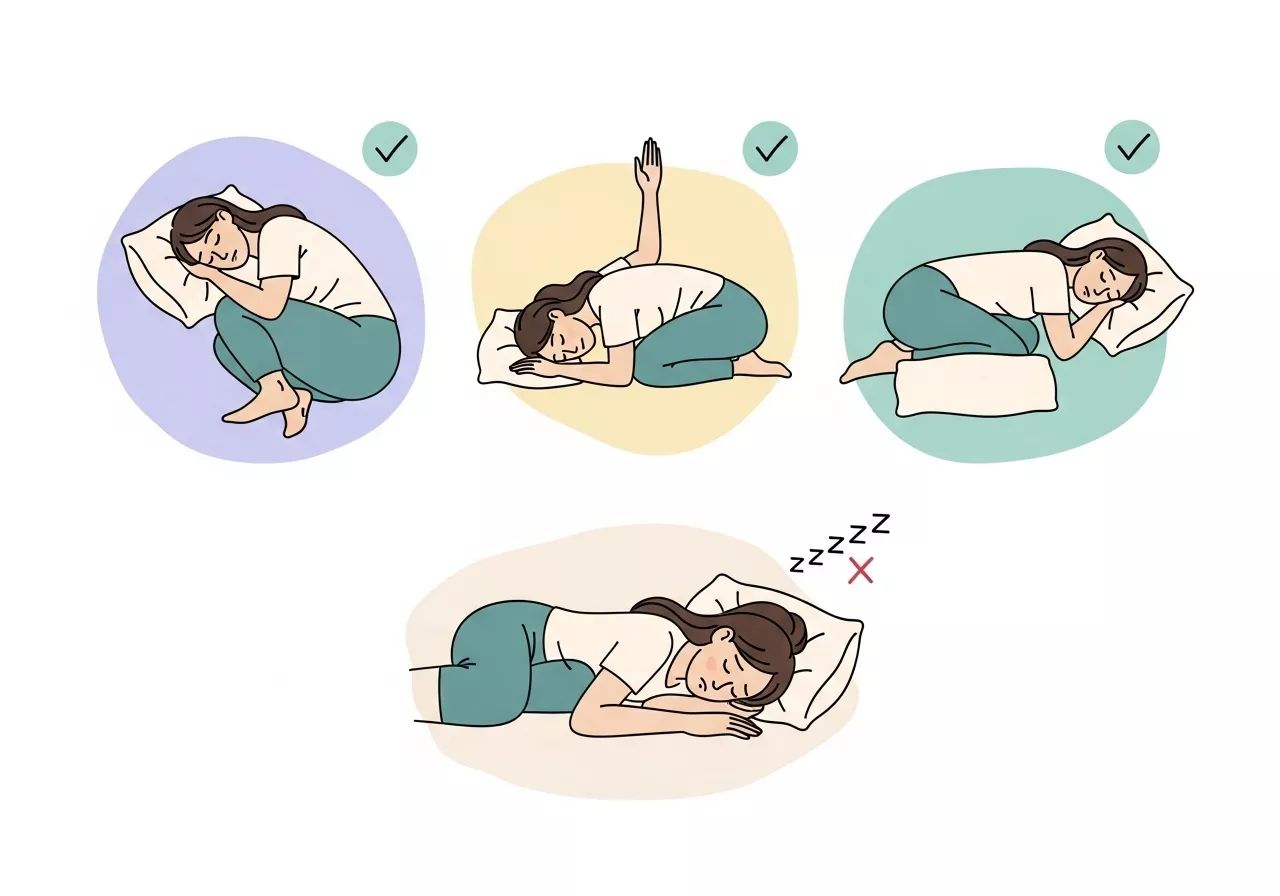The question of when to practice yoga is deeply personal and depends on factors like individual goals, daily routines, energy levels, and preferences.

While there is no universally “perfect” time, understanding the benefits of different times of day can help you tailor your practice to suit your lifestyle and maximize its effects.
Morning Yoga: Start the Day with Energy and Focus

Practicing yoga early in the morning, ideally around dawn, is considered highly beneficial in traditional yogic practices.
This time, known as brahma muhurta (96 minutes before sunrise), is believed to foster spiritual growth, mental clarity, and inner calm.
Morning yoga awakens the body, stretches stiff muscles, and energizes the mind, setting a positive and productive tone for the day ahead.
Morning yoga is especially ideal for invigorating poses like Surya Namaskar (Sun Salutations) and energizing sequences that enhance circulation and boost metabolism.
It’s also a time to build mental focus and mindfulness before the distractions of the day begin.
Afternoon Yoga: Recharge and Refresh

Midday yoga sessions are perfect for taking a break from the hustle and bustle of a busy day. Practicing during this time helps refresh the mind, reduce stress, and restore focus.
For many, afternoon yoga is an excellent opportunity to recharge, particularly if the morning felt rushed or hectic.
Gentle flows or restorative poses during this time can counteract the strain of prolonged sitting, improving posture and relieving tension in the shoulders, neck, and back.
Practices like pranayama (breathing exercises) can further rejuvenate your mental and physical state, enhancing productivity for the remainder of the day.
Evening Yoga: Relax and Unwind

As the day winds down, evening yoga can be a powerful tool for relaxation. This is the time to release built-up stress, stretch tight muscles, and prepare the body and mind for restful sleep.
Evening yoga often includes gentle stretches, deep breathing, and meditative practices that soothe the nervous system.
Poses like Child’s Pose (Balasana), Legs-Up-The-Wall (Viparita Karani), or a calming seated meditation can help signal the end of the day and transition into relaxation mode.
For those with demanding schedules, evening yoga provides an opportunity to reconnect with themselves and foster a sense of peace.
Aligning Yoga with Your Ayurvedic Dosha
In Ayurveda, aligning your yoga practice with your dosha type—Kapha, Pitta, or Vata—can optimize its benefits:
- Kapha Dosha: Morning yoga is ideal for energizing Kapha types, who may feel sluggish early in the day. Dynamic and active poses are recommended.
- Pitta Dosha: Pitta types may benefit most from a midday practice, focusing on cooling and grounding poses to balance their fiery energy.
- Vata Dosha: Evening yoga suits Vata types, offering calming and stabilizing poses that counteract their natural restlessness.
Personalizing Your Yoga Schedule
Ultimately, the perfect time for yoga depends on your goals:
- For energy and productivity, aim for a morning session.
- To reduce stress and restore focus, try midday yoga.
- To relax and improve sleep, practice in the evening.
Experiment with different times and observe how your body and mind respond. The key is consistency, as regular practice will provide long-term benefits regardless of timing.
Tips for Beginners: Starting Your Yoga Journey

Embarking on your yoga journey can be an enriching and transformative experience.
However, for beginners, understanding how to start and what to focus on is essential to cultivate a sustainable and enjoyable practice.
Here are some detailed tips to guide you as you take your first steps into yoga:
1. Set Realistic Goals
Begin by clarifying your reasons for practicing yoga. Are you seeking physical fitness, stress relief, improved flexibility, or spiritual growth?
Having clear goals will help you choose the right style of yoga and tailor your practice to meet your needs.
Keep your expectations realistic; progress in yoga is a gradual process.
2. Choose the Right Style
Yoga encompasses a variety of styles, each with different focuses:
- Hatha Yoga: Great for beginners, emphasizing foundational poses and gentle flows.
- Vinyasa Yoga: A dynamic style that links breath with movement.
- Yin Yoga: Focuses on deep stretches and relaxation, suitable for flexibility improvement.
- Restorative Yoga: Uses props to support the body in restful poses, ideal for stress relief.
Research or attend trial classes to discover which style resonates with you.
3. Invest in the Basics
You don’t need much to begin, but having the right essentials makes a difference:
- Yoga Mat: Choose a non-slip, comfortable mat to support your practice.
- Comfortable Clothing: Wear stretchy, breathable clothes that allow unrestricted movement.
- Props: Blocks, straps, and bolsters can help you modify poses and build confidence.
4. Find a Qualified Instructor or Use Reputable Resources
A good instructor will guide you through proper alignment and breathing techniques, helping you avoid injuries.
Look for beginner-friendly classes at local studios or online platforms.
If you prefer practicing at home, use instructional videos from reputable yoga teachers to ensure safe and effective learning.
5. Focus on Breathing
Breathing is a cornerstone of yoga. Learn to synchronize your breath with your movements, as this enhances focus and relaxation.
Start with simple breathing exercises, such as deep belly breathing or Ujjayi breathing (ocean breath), and incorporate them into your poses.
6. Be Patient with Your Progress
Yoga is not a competition. Flexibility, strength, and balance improve over time, so avoid pushing your body too hard.
Celebrate small milestones, like holding a pose longer or improving your posture. Remember that consistency is more important than perfection.
7. Practice Regularly, Even if Briefly
It’s better to practice for 10-15 minutes daily than to have infrequent, longer sessions. Short, consistent practices help build the habit and yield noticeable benefits over time.
8. Respect Your Body’s Limits
Listen to your body and honor its boundaries. If a pose feels uncomfortable or causes pain, back off or modify it with props.
Avoid comparing yourself to others and focus on what feels right for you.
9. Incorporate Relaxation and Meditation
Each practice should end with a relaxation phase, such as Savasana (Corpse Pose). This helps the body and mind absorb the benefits of the session.
Adding a short meditation practice can further enhance mindfulness and inner peace.
10. Keep a Positive Mindset
Yoga is as much about mental well-being as physical health. Approach your practice with curiosity and a sense of openness.
Release judgments or expectations, and allow yourself to enjoy the journey.
11. Stay Hydrated and Nourished
Drink water before and after your session, but avoid practicing immediately after a heavy meal. Light snacks, like fruits or nuts, can provide energy without causing discomfort.
12. Create a Dedicated Space
Having a quiet, clutter-free space for yoga can make your practice more enjoyable. Add calming elements like candles, plants, or soothing music to enhance the ambiance.
13. Learn the Basics of Alignment
Pay attention to proper form, even in simple poses. Good alignment prevents injuries and ensures you get the most out of each posture.
If you’re unsure about your technique, ask for feedback from an instructor or use a mirror to check your posture.
14. Stay Consistent and Flexible
While maintaining a routine is important, life can get busy. If you miss a day, don’t be discouraged—resume your practice when possible and adapt it to fit your schedule.
15. Celebrate Your Progress
Acknowledge the improvements, no matter how small. Increased flexibility, better posture, or simply feeling calmer are all achievements worth celebrating. Yoga is a lifelong journey, and every step counts.
By following these tips, beginners can build a strong foundation for a fulfilling yoga practice that supports their physical, mental, and emotional well-being.
What Works Best for You? Tailoring Yoga to Your Needs

Yoga is a deeply personal practice, and discovering what works best for you depends on several factors, including your lifestyle, goals, energy levels, and daily schedule.
While guidelines about the “ideal” time or style of yoga exist, ultimately, the most beneficial approach is one that fits seamlessly into your life.
Here’s how to determine what works best for you:
1. Consider Your Goals
What do you hope to achieve with your yoga practice? Your objectives can guide when and how you practice:
- If stress relief is your focus, evening yoga with restorative or gentle flows can help you unwind and prepare for restful sleep.
- For boosting energy and productivity, opt for invigorating morning sessions that kickstart your day.
- If building strength and flexibility is your goal, schedule longer sessions where you can work on challenging poses.
2. Assess Your Energy Levels
Your body’s natural rhythms play a significant role in determining the best time to practice:
- Morning People: If you feel most energetic in the morning, capitalize on this time to engage in dynamic poses and flows.
- Afternoon Energy Slumps: Use yoga as a midday pick-me-up to refresh your mind and body.
- Evening Energizers: If you feel more alive at night, an evening practice can help you channel that energy into strength-building poses before winding down.
3. Experiment with Different Times
There’s no substitute for experimentation. Try practicing yoga at different times of the day to see how your body and mind respond.
You may discover that certain styles of yoga feel more natural at specific times—for instance, flowing sequences like Vinyasa in the morning or relaxing Yin Yoga before bed.
4. Align with Your Lifestyle
Yoga should complement your daily routine, not disrupt it. Consider the following:
- Work Schedule: If mornings are hectic, a lunch break session or post-work practice might be more practical.
- Family Commitments: Choose a time when you can practice without interruptions, whether it’s early before others wake up or later in the evening after everyone is settled.
- Personal Space and Privacy: If you need a quiet environment, find a time when you can create a peaceful, distraction-free space.
5. Pay Attention to Your Body’s Cues
Your body often knows what it needs better than any set schedule. If you wake up feeling stiff, a gentle morning practice might help.
On days when you’re mentally exhausted, restorative poses in the evening can be rejuvenating. Listen to your body and adjust your practice to align with its signals.
6. Adapt to Seasonal Changes
Seasons can influence your energy levels and yoga preferences:
- In colder months, a warming morning practice with active poses can energize you.
- During warmer seasons, you might prefer slower, cooling evening sessions to help you relax.
7. Balance Consistency with Flexibility
While establishing a consistent practice is important, life is dynamic, and your routine may need to adapt.
If your mornings become too busy, shift your yoga to the evening. Being flexible ensures that yoga remains a source of joy rather than a chore.
8. Explore Different Styles and Intensity Levels
Your preferences might change over time as you explore various yoga styles and intensities:
- Start with beginner-friendly styles like Hatha Yoga to build a foundation.
- Gradually incorporate more challenging styles like Ashtanga or Power Yoga as you gain strength and confidence.
- Keep lighter, meditative practices like Yin or Restorative Yoga for days when you need to slow down.
9. Evaluate Your Progress Regularly
Take time to reflect on how your practice feels:
- Are you achieving the physical and mental benefits you’re seeking?
- Does your practice leave you feeling energized, relaxed, or balanced?
- Are there adjustments that could make it more enjoyable or effective?
Regular self-assessment helps ensure your yoga practice evolves alongside your needs and goals.
10. Create a Practice You Look Forward To
Ultimately, yoga should feel like a gift to yourself rather than an obligation. Personalize your practice by:
- Adding elements you enjoy, such as soothing music, candles, or essential oils.
- Practicing in an environment that inspires you, whether it’s a serene outdoor spot or a cozy corner in your home.
Finding what works best for you may take time, but the journey is part of the reward.
As long as your practice feels meaningful and supportive, you’re on the right track.



